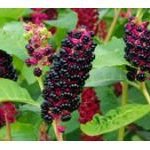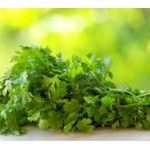Sanguinaria canadensis, most commonly referred to as bloodroot, has a rich Native American background. Its nickname, war paint, should give you some indication of its importance to the early Indian culture. The name, bloodroot, came about because of the red sap that would “bleed” from the roots of the flower. Many tribes used it as a dye for clothing, baskets, and face paint. Other parts of the flower were used to create orange and yellow dyes as well. At one point it was even imported by the French for use as a coloring agent on wool.
The flower is local to eastern North America and is one of the earliest wildflower blooms found in spring. While there are many more interesting facts on the horticulture of this plant, (for instance, the bloodroot relies on ants to spread its seeds) it actually has a number of natural health benefits as well.
Bloodroot’s Anti-Cancer Properties
In fact, it is considered to have certain anti-cancer properties since it contains berberine, a substance found to fight cancer cells. In addition to laboratory tests verifying its anti-cancer potency, it has been used to treat tens of thousands of people over the last century and a half. Many of these (according to some estimates as many as 80%, which is probably greatly exaggerated) experienced remission of malignancy and longer life expectancies than people with similar conditions who chose different treatments.
Bloodroot Supports Healthy Cells
Because of its ability to support healthy cells, Jon Barron uses bloodroot in his Blood Support formula. It is currently being studied further to determine its level of effectiveness as a skin cancer treatment. While the studies may not confirm its use for this yet, bloodroot has been used for years to treat a variety of other skin conditions including ringworm, skin tags, warts, polyps, and fungal growth. Dr. Andrew Weil has recommended a powered or paste version of bloodroot for the removal of skin tags and moles.
Bloodroot as an Antibiotic
Its antibiotic properties have led to its being approved by the FDA as a toothpaste ingredient. The extract has been used to treat gingivitis and help with prevention and formation of cavities, plaque, and tartar.
More Natural Health Uses for Bloodroot
Native Americans took notice of the plant’s ability to stimulate mucous membranes and used bloodroot as a tea-based remedy for coughs and other respiratory conditions. Bloodroot can also help improve blood flow in the body and is believed to help prevent heart palpitations. In addition, a variety of other uses for bloodroot have been reported. On the WebMD website, it is reportedly being used for the following:
“Bloodroot is used to cause vomiting, empty the bowels, and reduce tooth pain. It is also used to treat croup, hoarseness (laryngitis), sore throat (pharyngitis), poor circulation in the surface blood vessels, nasal polyps, achy joints and muscles (rheumatism), warts, and fever.”
How to Take Bloodroot
While the usage for this plant is wide, there is one caveat. A little can go a long way. According to the NYU Langone Medical Center, “In large doses, it causes nausea and vomiting, and even at lower dosages [but still larger than used by knowledgeable herbalists] it has been reported to cause peculiar side effects in some people, such as tunnel vision and pain in the feet.”
It is widely used as a topical treatment, but since it can cause burns after long-term use when applied directly to the skin or with excessive application, it is important to start slowly to determine sensitivity when used topically.
For more on natural healing herbs, click here.
Resources:
http://www.all4naturalhealth.com/bloodroot-herb.html
http://www.drweil.com/drw/u/id/QAA361873
http://www.medicalhealthguide.com/herb/bloodroot.htm
http://www.wisegeekhealth.com/what-is-sanguinaria-canadensis.htm
http://en.wikipedia.org/wiki/Sanguinaria
http://www.med.nyu.edu/content?ChunkIID=21596
http://www.ces.ncsu.edu/hil/hil-134.html









Blood root for poison ivy
When I was young, my brother has poison ivy so badly that first they gave him lotions than the doctors gave him shots and nothing worked. It looks like elephantitis layer after layer on top of each other. My father’s friend who was an artist and also studied plants came to visit. He saw my brother’s condition and said do you have any swamps around here. We did at the time and he said let’s go find some blood root. Sure enough we found some. He said you crush the plant to get the juices flowing and then you rub the plant on top of the poison ivy. The next day my brother’s poison ivy had gone down by two-thirds and the next day there was none. They have since filled in most swamps around here, so I have no idea where we would find bloodroot now.
bloodroot
can be found on ebay as well as most health food stores, homeopathic type stores…
Blood root
Those Nature People are who I buy most of my herbs from we have some one who sales it locally at our Farmers market but I am sure they have a web site, I paid 10.00 for 1.0 oz just yesterday. I hope that helps…
Please make it point wise
Please make it point wise
Thanks!
Thank you so much for the information!!!!!! ❤️❤️☮️
Athlete’s foot fungus
When I was in grade school I picked up Athlete’s foot fungus from our local swimming pool. It became so bad on my feet and toes that our family Dr., after trying everything in ointments and soaking in bleach water, told my Mother if it wasn’t cleared up in 2 weeks with a salve my Grandmother mixed up, my toes had to be amputated. Incredibly the salve dried up the fungus and I was saved. The salve had a ??? tar smell to it and was a paste, orange in color which stained the sheets, socks, and gloves I wore to bed at night. Stains were non removable. The recipe went to heaven with my ancestor’s. I always figured the orange was Bloodroot and the tar smell was Pine Tar. If anyone has suggestions about what this salve could have been please post an answer. Or would anyone know of a similar sounding product on the market today as my Nephew has a serious case of Athlete’s foot and the modern ointments are not correcting it.
athlete’s foot
I’m not sure about your Grandmother’s salve but a couple people in my family had really bad athlete’s foot and an old Indian/Mexican man told us to go into a wet horse corral barefoot and then let it dry on our feet before we washed it off. Sounds weird I know but, It really helped get rid of it.
Herbal Med
If not pine tar, it was more likely coal tar (very useful topically). Coal tar was the old remedy I had to use as a kid for psoriasis.